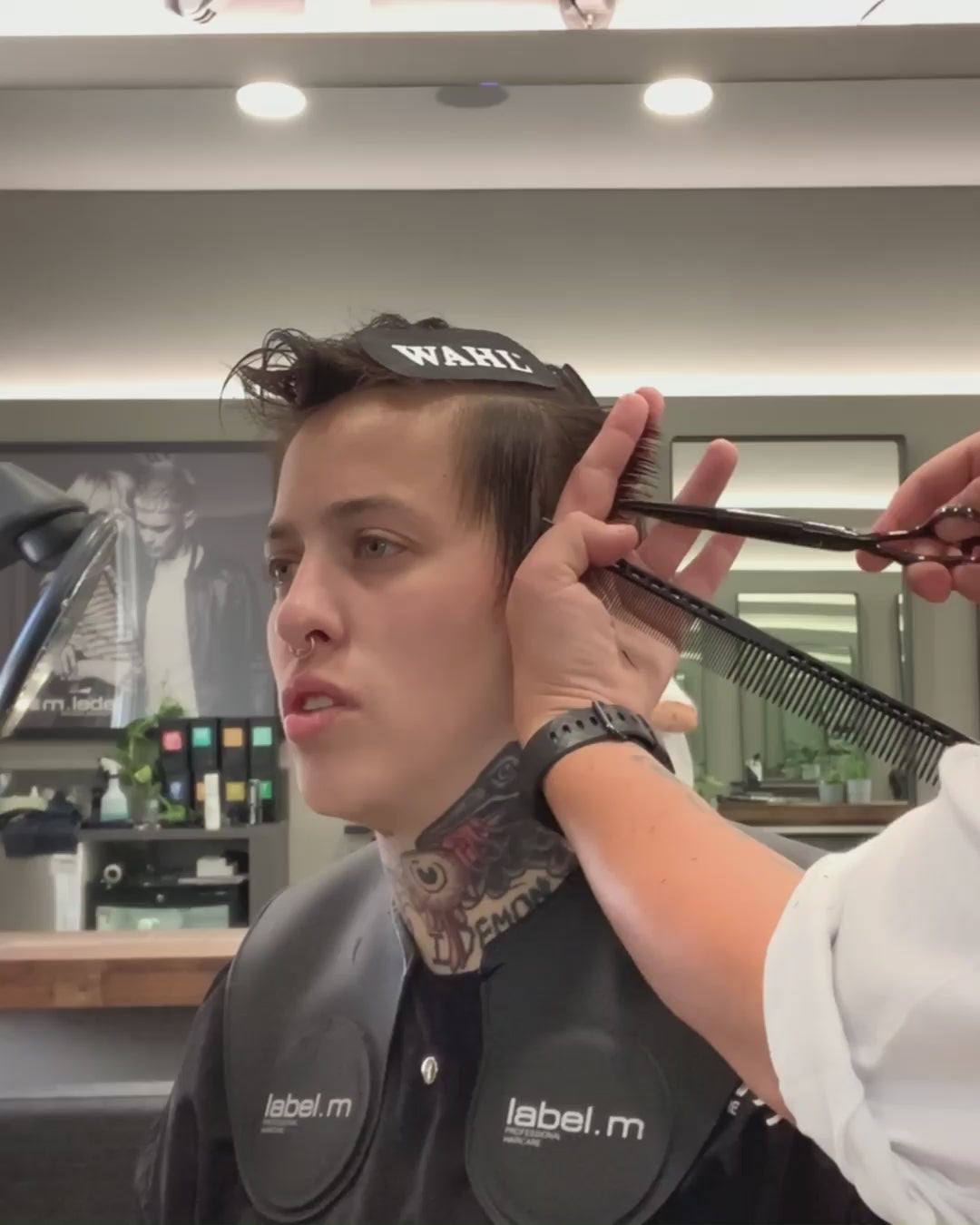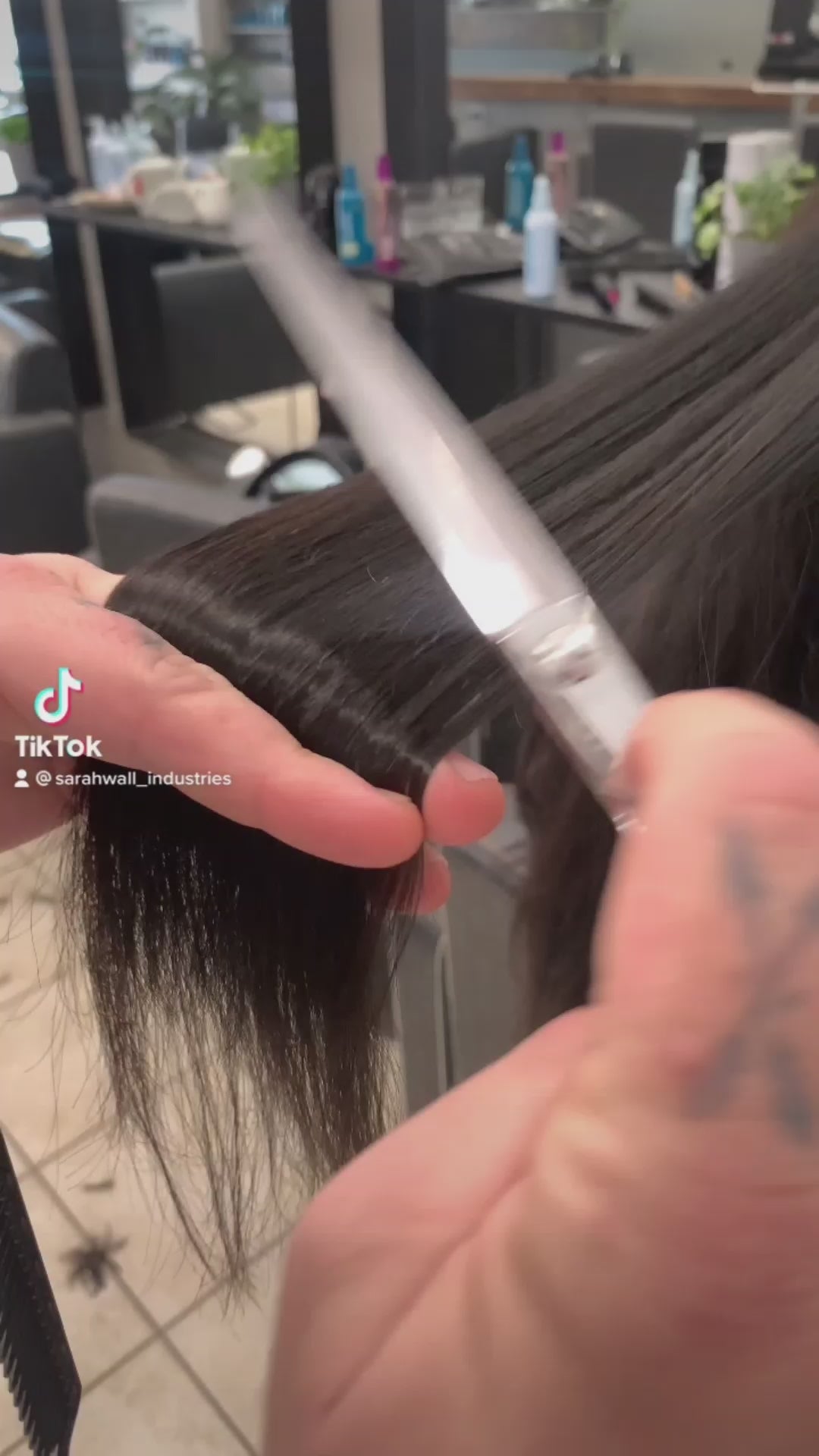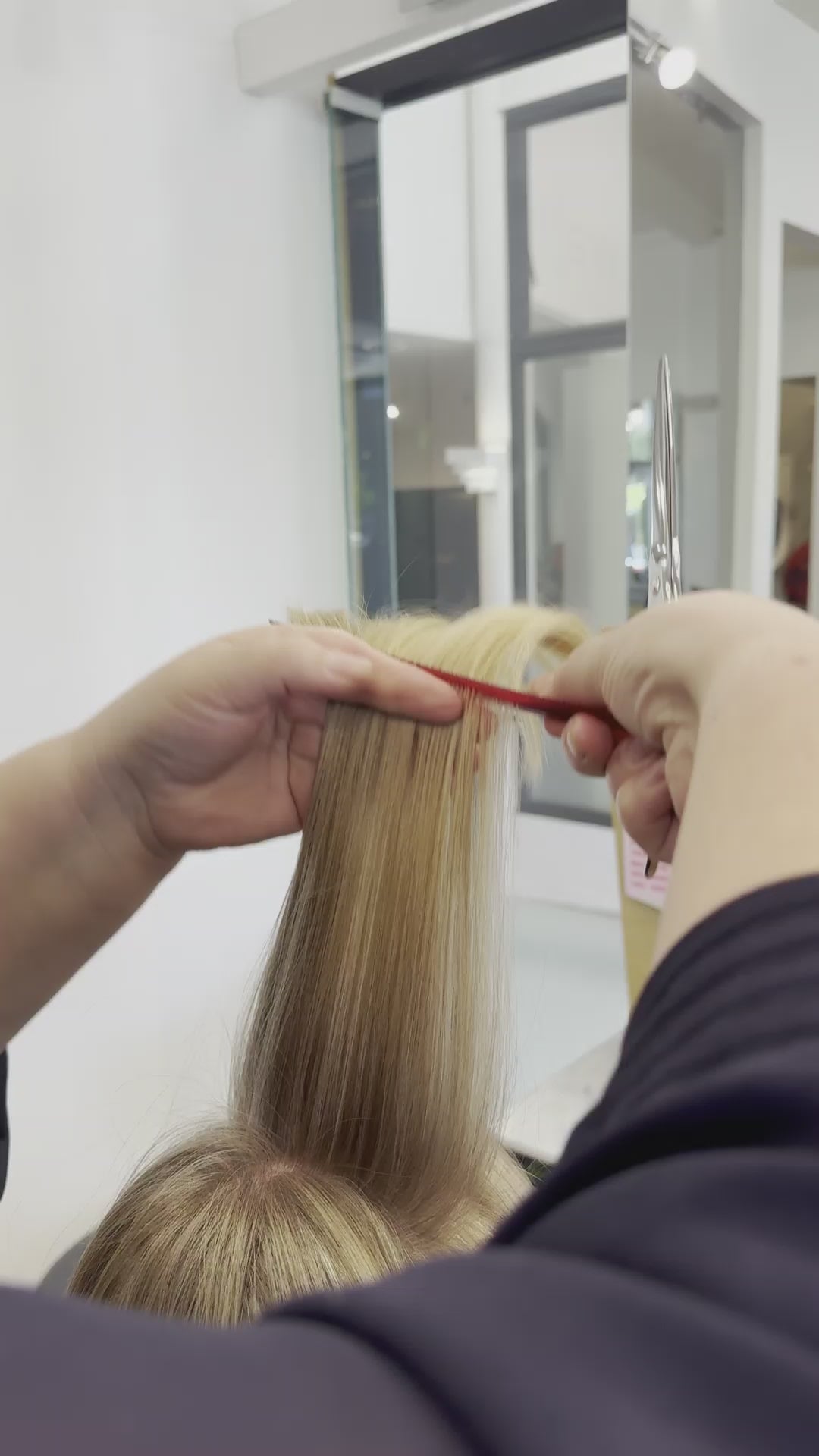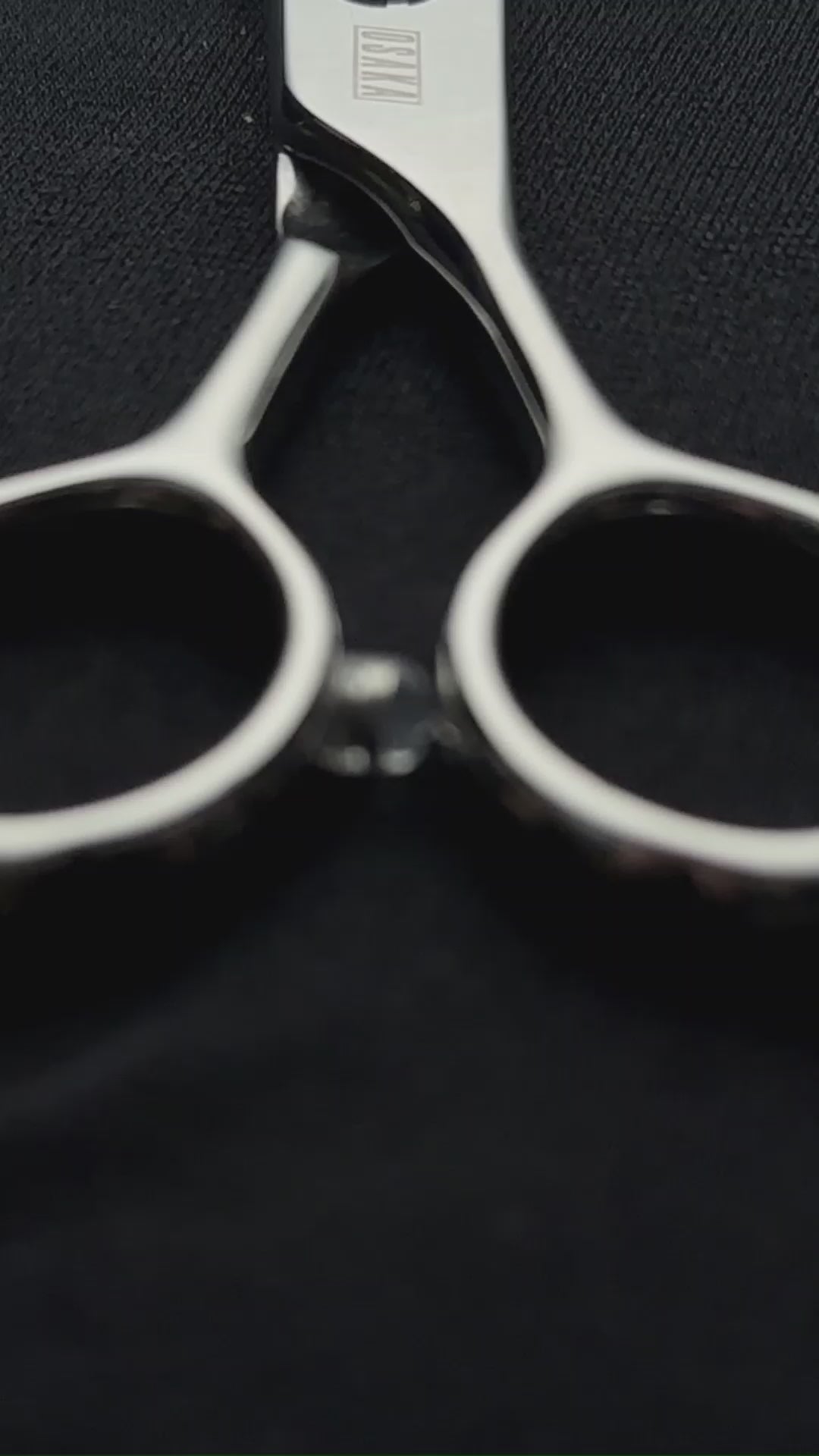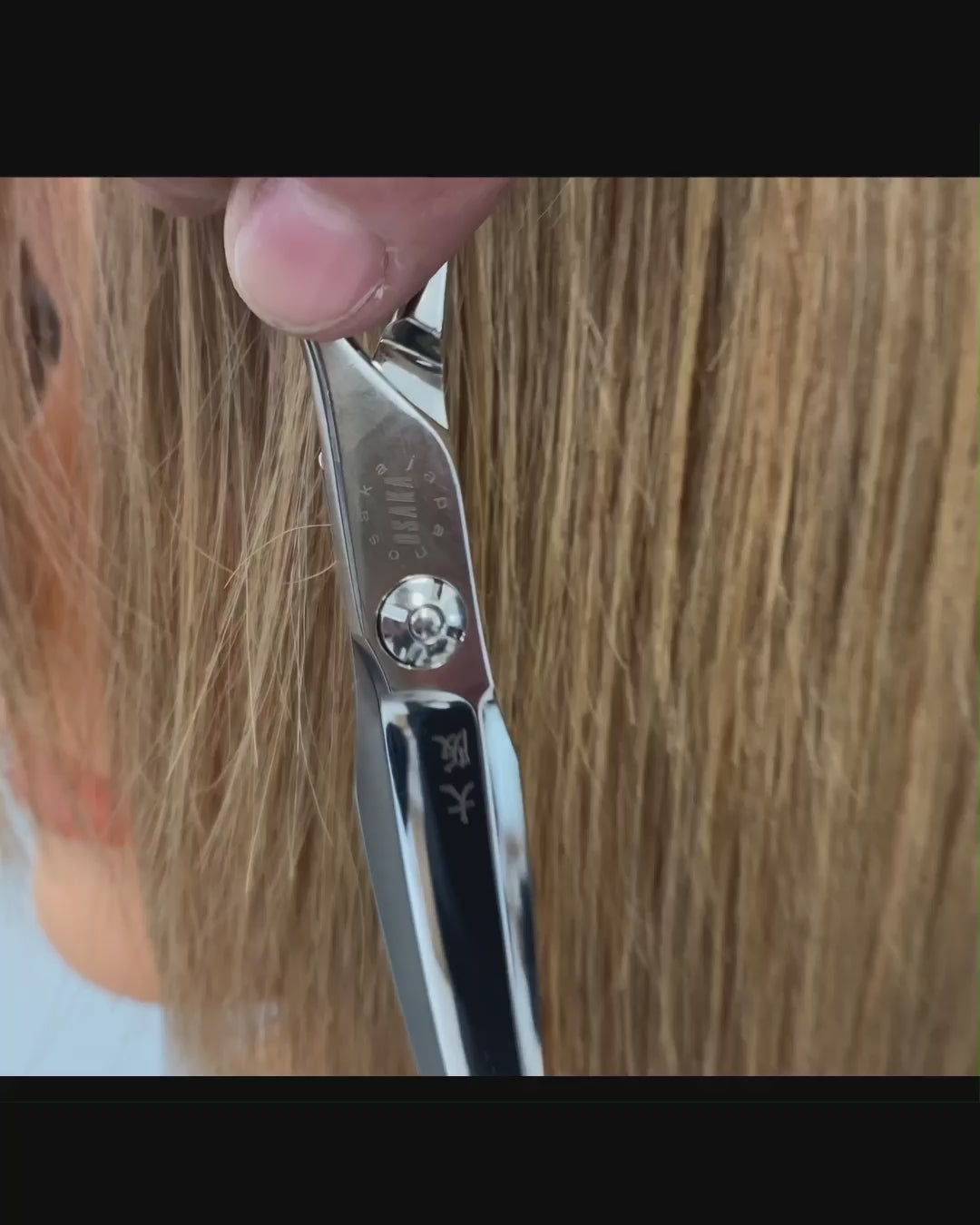How to Adjust Shear Tension Correctly
Your technique is sharp, and you've invested in premium scissors. So why does hair still fold during cuts? Why does your thumb throb by closing time? If sections need constant rework, the problem isn't your skill. Before you second-guess your skills, there's a hidden culprit: your scissor tension. In this guide, you'll discover the science behind perfect tension and the exact steps to dial in your scissors for flawless performance.
Stop Blaming Your Technique (It's Really Your Tension)
Research into hair biomechanics reveals that improper shear tension literally damages hair at the microscopic level. A study on hair-splitting mechanics found that cutting implements create longitudinal shear stress within the hair strand. When scissors aren't properly tensioned, they generate excessive shear forces that create microcracks inside the hair shaft, eventually causing splits that extend several millimetres or more.
The research compared hair prone to splitting with healthy samples, discovering that improper mechanical stress from cutting tools was a primary factor in creating internal damage that leads to split ends. Your tension setting determines whether you achieve clean cuts or fibrous, stepped fractures.
Poor tension doesn't just ruin cuts. It ruins your body, too. Overtightened scissors make you squeeze harder, sending tension rippling through your hand, wrist, and up your forearm. Rack up thousands of cuts weekly, and that strain turns into chronic pain. Loose scissors aren't better. They force awkward grips and demand more closing power. Getting tension right protects both client results and your ability to keep working.
The Warning Signs You've Been Cutting with Broken Scissors (Without Knowing It)
When Tension is Too Loose
Hair folding is the classic sign. Instead of a clean slice, the hair bends or pushes away from the cutting edge. You'll notice bent hair ends rather than crisp tips, strands requiring multiple passes, or "escaped" hairs that slipped through without being cut. The blades feel loose at the pivot point, may click, or separate slightly during closing.
When Tension is Too Tight
Your body tells you first. Thumb soreness is the primary symptom—that deep ache through the pad or joint. Your hand fatigues earlier than usual. The scissors feel stiff and require more force to close. The blades move with restricted, jerky motion. You might notice heat from excessive friction at the pivot point or a "sticky" feeling during blade travel.
How to Adjust Shear Tension Like A Pro
Think of scissor tension as the relationship happening at your pivot point. Blade contact, friction, and leverage all come together there. As you close your scissors, both blades need to stay connected along the full cutting edge from tip to heel. No gaps, no separation.
Research into cutting performance with precision instruments reveals why this matters. Studies on surgical scissors found that cutting involves both a "slice" component and a "push" component. The slice-to-push ratio determines efficiency. Scissors with optimal pivot positioning and tension create more slicing action relative to pushing, dramatically reducing the force needed and minimising deformation.
When your tension is dialled in correctly, the blades create that ideal slice-push ratio. The hair experiences clean shearing rather than being crushed. This is where precision-engineered scissors—like those crafted from Japanese steel with meticulous pivot design—perform differently from generic alternatives.
The Exact Steps to Fix What's Destroying Your Cuts
The Paper Test Method
Hold standard printer paper vertically. Open the blades to 45 degrees, position them one-third from the tip, then make your cut. Perfect tension produces a clean, effortless cut with no tearing. If the paper folds, your tension is too loose. If cutting requires significant pressure or grinding, your tension is too tight.
Adjustment Techniques by Tension System Type
Adjustable screw systems: Using the proper tension key, make quarter-turn micro-adjustments. Turn clockwise to tighten, anti-clockwise to loosen. Test after each adjustment.
Fixed tension systems: These use a permanent rivet or sealed bearing and require professional servicing.
Bearing systems: May have an adjustment collar or require specialised tools. Consult the manufacturer's instructions, as over-adjustment damages precision bearings.
Fine-Tuning for Your Cutting Style
Your ideal shear tension depends on the technique. Slide cutters prefer slightly looser tension for smooth blade motion. Point cutters favour moderately firm tension for precise control. Blunt cutters need firmer tension to handle cutting multiple hairs simultaneously.
Why Your Last Adjustment Made Things Worse (And How To Quickly Fix It)
Most stylists crank their tension too tight. Here's the fix: loosen it in quarter-turn increments until you find that sweet spot where control meets smoothness. Using the wrong tool can strip the adjustment screw—invest in proper tension keys. Always test before and after adjustments. Monthly tension checks prevent gradual performance decline.
The Unfair Advantage of Premium Japanese Tension Systems
OSAKA Scissors exemplify precision engineering that makes tension management effortless. Crafted from legendary Japanese steel with meticulous pivot design, these scissors feature tension systems that hold settings through thousands of cuts. The pivot mechanisms are ground to micrometre tolerances, ensuring blade alignment remains perfect.
When Your Scissors Need More Than You Can Give Them
Warning Signs You Need Professional Sharpening
Research on surgical instrument maintenance reveals that improper handling causes blade deformation that home maintenance cannot address. Research confirms what professionals know: regular inspections, proper cleaning, and expert servicing keep scissors performing at their absolute best.
Look for these red flags: cuts that stay rough even after adjusting tension, nicks or burrs on the blade edge, gaps visible when blades close, or performance that keeps declining no matter what you try. OSAKA's professional sharpening service restores factory-level precision.
The Value of Professional Servicing
Professional servicing addresses blade geometry and edge alignment issues that tension adjustment alone cannot fix. Technicians inspect pivot wear, blade alignment, and handle integrity. Regular professional maintenance keeps quality scissors cutting flawlessly for decades, not just years.
Keep Your Tension Perfect Between Adjustments (Without Obsessing Over It)
Daily Care Routine
After each client, wipe blades clean with a soft cloth. Once daily, apply one drop of scissor oil to the pivot point, open and close several times to distribute, then wipe excess. Check tension weekly using the paper test.
Essential Accessories for Scissor Care
OSAKA offers precision-formulated cleaning solutions and scissor oils engineered for Japanese steel pivots. Proper storage in scissor pouches prevents blade contact with other tools and shields against moisture.
OSAKA Scissors' Design For Effortless Tension Adjustment
Experience scissors engineered for precision. OSAKA's diverse range showcases elegant designs where superior Japanese craftsmanship takes centre stage. Each pair features unmatched sharpness from legendary Japanese steel, ergonomic designs prioritising hand comfort, and tension systems that adjust smoothly and hold settings reliably. Explore OSAKA today, where hairdressing meets excellence.





